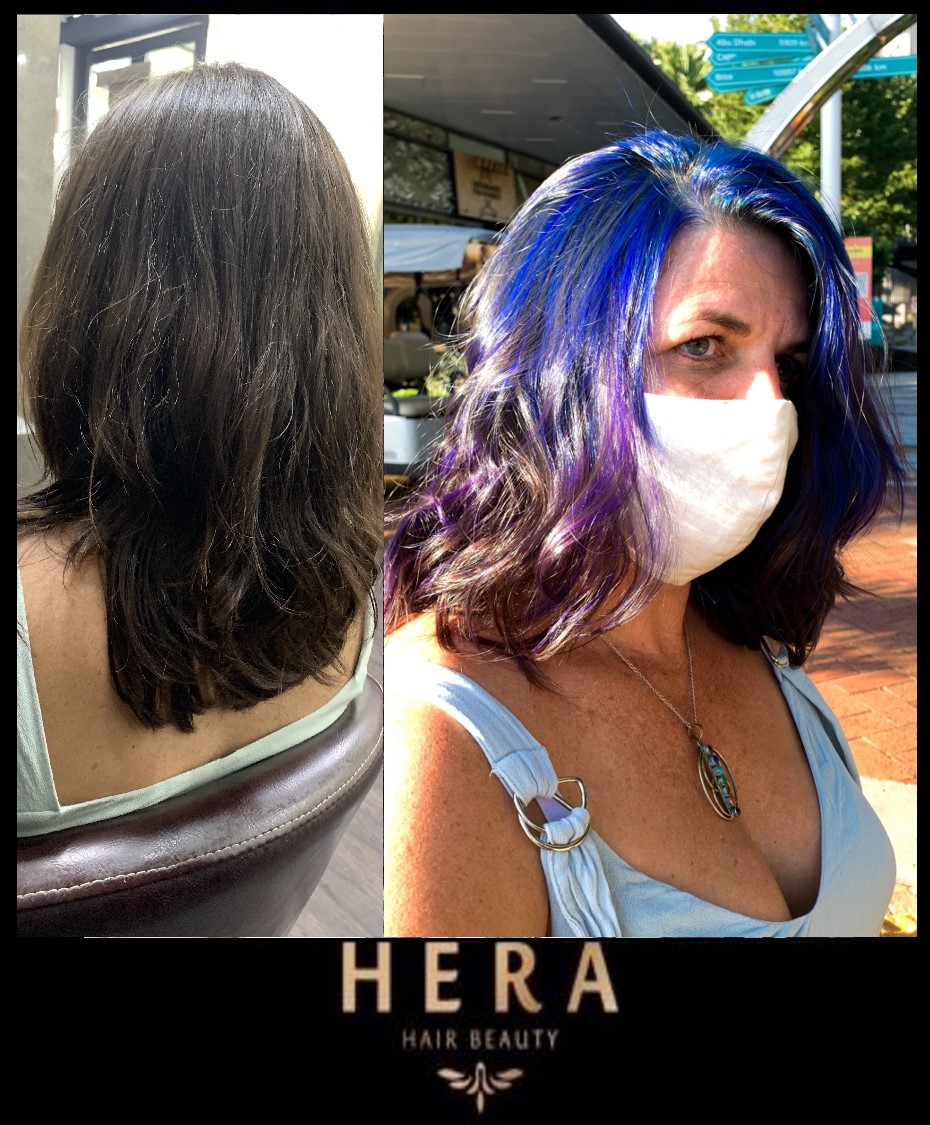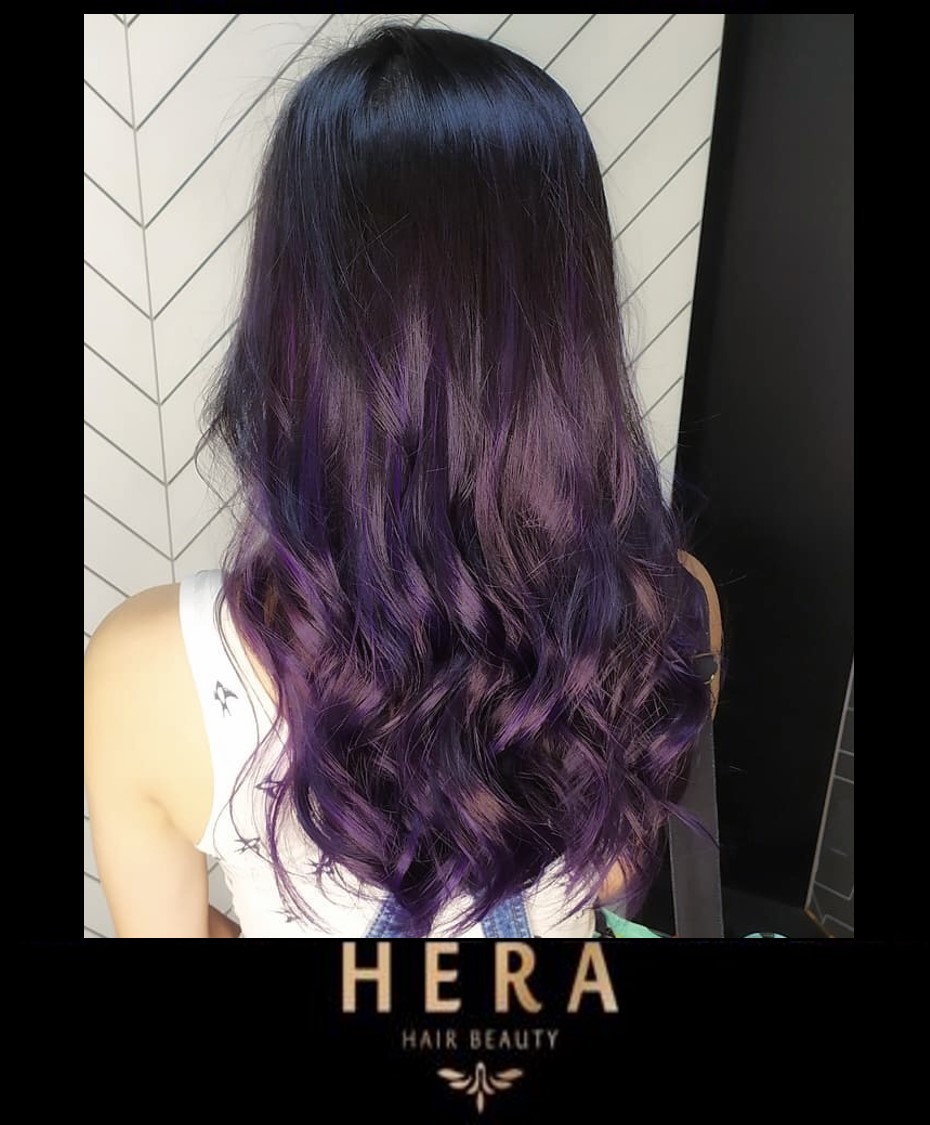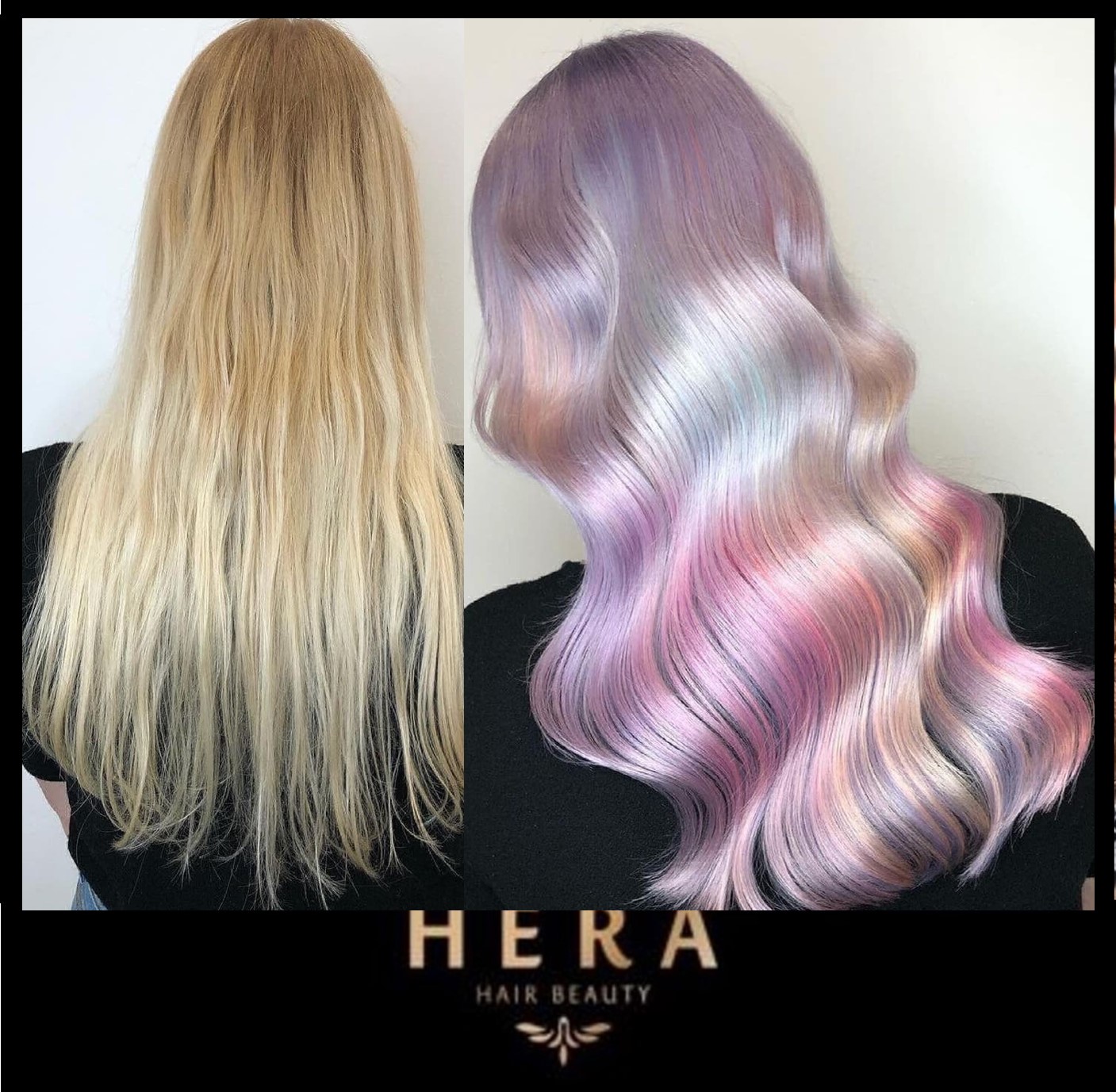In our Hera salons, we are often asked about what are the hardest colours that we have to achieve.
This can be viewed in two different perspectives. Which colour is most difficult and challenging for a colourist to achieve? Or which colours are the most difficult for our clients to maintain?
Colours that are often challenging to achieve, they are the same colours which are normally difficult to maintain as well. These colours are also usually our clients favourites, although they are more difficult for colourists to achieve. They also require more patience and maintenance on our client’s commitment. They are certainly worth it once you have them (which may take several months across a few sittings). Once you get there, they can be so satisfying!
We will now go through the top challenging colours in our salon.
Number 1
First and foremost, ICY, PLATINUM, GREY OR SILVER is certainly the most difficult hair colour to achieve.
This is the most difficult tricky colour on any level. This applies to platinum, icy and white as well as any silvers, greys, or dark slate grey.
It is difficult to achieve this because you must get nearly full white blonde for any kind of silver. This is due to the actual fact that any warmth in the hair (meaning gold, yellow, or even the tiniest bit of natural looking blonde which is basically yellow) will make your hair stand out against the silver and exhibit a strong contrast.
It’s like putting on both silver and gold jewellery at once. The gold tends to appear yellower and not in a positive way.
Next, the silver must be applied to very light blonde hair to make it even more prominent. If we used it on a normal natural blonde, the lightest blonde pieces will be covered but it will not cover the natural golden pieces that are the darker parts of natural blonde hair. It can either look dirty golden grey or it will not appear at all. The reason is because ash, which is the shade that is used to make grey hue, has the lowest intensity of all the colours. Because it is considered the weakest shade, thus it will not be able to cover any other colour than the blondes with the lightest shade.
The fact that it has to be applied over the lightest and plainest blonde and thus raises the next challenge for colourists to make sure that you are blonde enough.
It is a common trend for most of our clients to have dyed their hair when they come to our salon. It is only once a blue moon to see someone come in with natural virgin hair and request us to help them achieve the icy or grey hair goal. Hence. The first goal will be to erase all her hair colour (which can be at different difficulty levels). It can take one appointment or, in the case of reds or darker colours, it may take a few salon sessions.
It is impossible to provide you a time frame before we begin lightening your hair for the first time. Because everyone’s hair is genetically different, thus we can’t tell you immediately that your hair will take two appointments to be lightened enough. A person with brown hair might need two appointments, while someone with the exact same brown colour may require four.
It is also the easiest and fastest to get washed out because it is not as intense as other colours. It will return to its original light blonde colour once it is washed out. However, most people do not mind this and they accept that it won’t go silvery or gray anymore.
Let’s sum it all! You will need to invest time and money to get your icy or grey hair. This is the most difficult colour to achieve and it washes out very quickly, making it as well as it is the most challenging colour to maintain. Hence it is the number one on our list.
Number 2


Our second spot goes to PURPLE!
Let’s start with purple. There are many shades of purple, and there are many ways to get that shade.
There are the bright purples, deep purples, pink purples, pastels as well as blue purples and the list continues. This also applies for BLUE hues.
To summarize, it is another colour that must be fairly light in order for the purple to appear. As purple hues contain blue, which is the same colour used to make grey and in hairdressing, it is termed as ash (only in small quantities). This colour is also a rather touchy colour.
Most people are aware that purple can be achieved by adding blue and red or blue and pink. Like grey and ash, if your hair is not light enough, the blue won’t show up well, leaving only the red or pink. Many people should have discovered this themselves by experimenting at home or the salon so that it will show up more towards red or red plum. Thus, blue is also a challenging colour to achieve.
You can counteract this by using a dye directly or another dye with more intense and stronger pigments. However, there is a major downside to this. You tend to get green hair if the blue hair fades.
If you want a bright purple or if your hair is too dark to use the salon’s regular colours, then we will need to use a direct dye direct. This hair colour doesn’t develop and stays the same as it came out of the tube. It is a mixture of purple that goes as white cream and it develops slowly which will eventually fade out back to blonde. For a direct dye which applied as a bright purple shade and it will fade to green gradually.
We will usually discuss the with the clients as there is a need to weigh the downside of fading to green and the need for bright purple before making the decision.
The second reason purple can be difficult to dye is because it fades fast. In some cases, it may fade extremely fast after just one appointment and hence to prevent this, we have to lighten the hair for some cases. Some clients have reported that it disappears after only two washes. If they let us know, we’ll always top it up and it will be expected to last for between 3-5 weeks.
The analogy is like painting a wall. After you have managed to strip back the wall, you can apply one coat of purple paint to it. It will tend to chip off faster and become more translucent. Eventually, it will be more purple and last longer after the second coat of paint on the wall.
The fundamental technique is just about building up the layer of dyes. You can layer the purple more often (but you don’t have to perform lightening every time. Once you get the purple, you only need to apply the purple again on every appointment). This will help the purple hair last longer if there are more purple layers built up.
Next, what are you going to do if you have decided to change your purple colour.
This is fine if you are having regular purples, but it is more challenging and can take a long time to get rid of those darker or brighter purples. Please take note that it is almost impossible to get rid of the green and minty hues it leaves behind. You will need to bleach it several times, using extremely gentle bleaching. Also for the new colours, you must use those colours that are able to cover it. These include darker colours like pinks and reds. It is still achievable if you wish to go darker hues, but if your hair goals are towards copper or blonde, then it may take some time to get to these desired shades. If the hair is sufficiently lightened out, copper will mix with the mint-blue and turn it into a horrible shade of browny greeny-mud colour.
To summarize, purple hue is also quite difficult to achieve, and it will fade much faster than other colours.
Number 3

Pastels are the next hardest colour to achieve. You can see many of the reasons for pastel hair are similar to what have been above mentioned in the last two colours, as well as the fact that for pastel hair, it is required to be very light and has a low concentration of pigment, so it fades quickly, much like silver.
Rethink the painting analogy. You only need to add very little pigment to white paint in order to get pastel pink or purple. The same concept applies to pastel hair colours. For a hair base with blonde or clear hair colour, you only need to add a small quantity of colour pigment. This is why each wash will see only a little bit of colour that come out. It’s because the pigment isn’t very much in the hair and it will be faded and gone quite quickly.
The advantage of the pastel colour is that it will fade to a beautiful blonde which you can still show off afterwards.
Number 4

Green! Green is our favourite colour, but the challenge with this hue is that instead of getting it in the hair, it tends to get it out.
The same applies to the green or mint colour that purple and blue fade to. It will eventually fade to green. This is a great colour because it can last for very long and hence it is considered to be one of the easiest colours to maintain. It can be the advantage that the green hue will remain in your hair forever but the drawback is that it is going to take a lot of time to bleach it over multiple appointments when you decide to change your hair colour. Thus you really need to think about what it will take to go green before making a decision.
Number 5

We ranked this one at number 5, simply because there are so many renditions of ROSE GOLD! A lot of natural redheads believe they can get Rose Gold without having to lighten their hair.
This is also one of the most challenging colours that we always have to explain to our clients, especially to those who are naturally redheads (as they tend to underestimate the difficulty) that their hair is required to be lightened. It doesn’t have to be lightened much depending on the existing hair colour, but once again, for natural redheads, it certainly needs to be lightened.
We know that hair structure is different for every type of hair. Natural redheads are known to have hair that is very difficult for colouring. Most redheads are aware that if they attempt to make their hair on darker shades, the colour will not adhere to their hair as well as it would on blondes or brunettes. Also, they will always have that natural red reflection if they try to lighten their hair.
To achieve the rose gold hair goals, you’ll need to lighten the hair and add a rose-gold tone layer over the top.
Another thing to mention is that there are many shades of Rose Gold. Most people who say they want to go Rose Gold, they usually refer to the pastel pink. It is important to bring a photo to use as a reference. Because the person in the photo is not you, the colourist will certainly try their best but they may not always replicate exactly the same hair colour as in the reference.
Rose Gold is technically a copper hue with a little pinky red. Rose gold is literally the colour of rose-gold jewellery (That is not pastel pink right?). It is dominantly golden and almost orange with a hint of pinkish colour. This can be problematic as many people don’t love copper or gold and just want the pastel pink.
There is no problem with the way you can describe a colour, but we want to ensure you get it right. Thus, reference photos are always the best. We hope you find this helpful in ensuring you can decide which colour you want.


Very informative. I learned a lot. I have mostly white hair now stained brassy green in streaks where the water hit my head in the shower supplied by well water. My hair color as a young woman was dark blonde, or mouse, very ashy with cold high lights. A great disappointment to me with a blond mother and red-head father. Once I discovered highlights, I was happy. I loved my whitening hair because I no longer needed the highlights until I went to live in the country with well water., which is heavy in iron. I immediately started using filtered water. Visits to hairdressers produced no effect, from Malibu treatment, (oh I forgot my hair went pink in front), then a second visit to get rid of the pink, then a third visit (what was I thinking?) a $200 dye job complete with black streaks (called lowlights). The overall effect was grey. Photos were not accurate and made my hair look light blond. Plus I have never had black streaks in my life. Now, five months later, the black streaks are still prominent and the other stuff is getting greener. I guess my best bet is to get a whole house filter to get rid of the orange iron content and to let my hair grow out. I feel bad because i look as though I am letting my dye jobs grow out and I want to say, this is not what happened to me, though I guess it is. Only one dye job, though, only one. Wish somebody could help me.